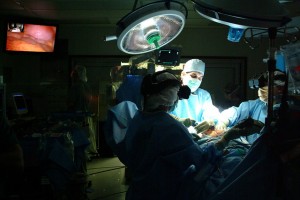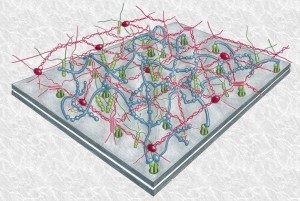If today you cut your hand accidentally, what would you do? I would put some pressure on the wound and a Band-Aid to stop the bleeding! However, what if you are an military doctor operating on someone who has been shot on the battlefield, and is bleeding profusely on the operating table?
Modern blood clotting agents do exist, but they are slow to action and may pose health risks later on. This is where Vetigel™ comes into the spotlight! Created by Joe Landolina and his company Suneris, this new invention has the possibility to revolutionize the medical field.
Before we find out what Vetigel™ does, I will first explain how our body heals that simple paper cut on our hand. It may be surprising to know that the healing mechanisms behind a paper cut and a gunshot wound is strikingly similar. The major difference is the size of the wound, which means your body has less time to self-heal with more blood being lost every second.
Our wounds heal with special mechanisms that involve our cells, and a microscopic mesh that exists between these cells called the extracellular matrix. This matrix is also what holds your cells in place, help cells communicate with each other, and assist in nutrient transport. When a wound heals, the human body is simply recreating this matrix with the help of other specialized cells from the immune system (Enoch & Leaper, 2005). Unfortunately, I don’t think the human body has the one type fits all kind of extracellular matrix. Instead, our bodies has to slowly recreate this extracellular matrix specifically for the site of injury.
In my opinion, this problem of slow self-regeneration is what Vetigel™ tries to resolve. Vetigel™ can spontaneously assemble into the same “configuration” of extracellular matrix wherever it’s applied. It speeds up your own body’s ability to heal wounds by removing the need to slowly recreate the extracellular matrix. If you put Vetigel™ on your skin, the gel will self-assemble into a mesh similar to your skin`s extracellular matrix; if you apply Vetigel™ to your heart, the gel will assemble into a mesh similar to your heart’s extracellular matrix. I was truly amazed at the speed at which traumatic bleeding can be stopped, here is a video demonstrating Vetigel™ in action (blood warning):
Joe Landolina`s genius is that he realized certain polymers derived from plant cell wall have self-assembling properties. Therefore, by basing Vetigel™ on these plant polymers, Vetigel™ can automatically assemble in a similar fashion as the micro-environment it is applied on. Here’s his TED talk giving a more detailed introduction of his product:

The future of emergency and military medicine sure looks bright, but FDA approval of this amazing product is still a few years away. For now, Joe Landolina has started producing Vetigel™ for veterinary medicine, and maybe one day your beloved dog will be saved because of innovative science!
By Yu Chieh (Brian) Cheng



